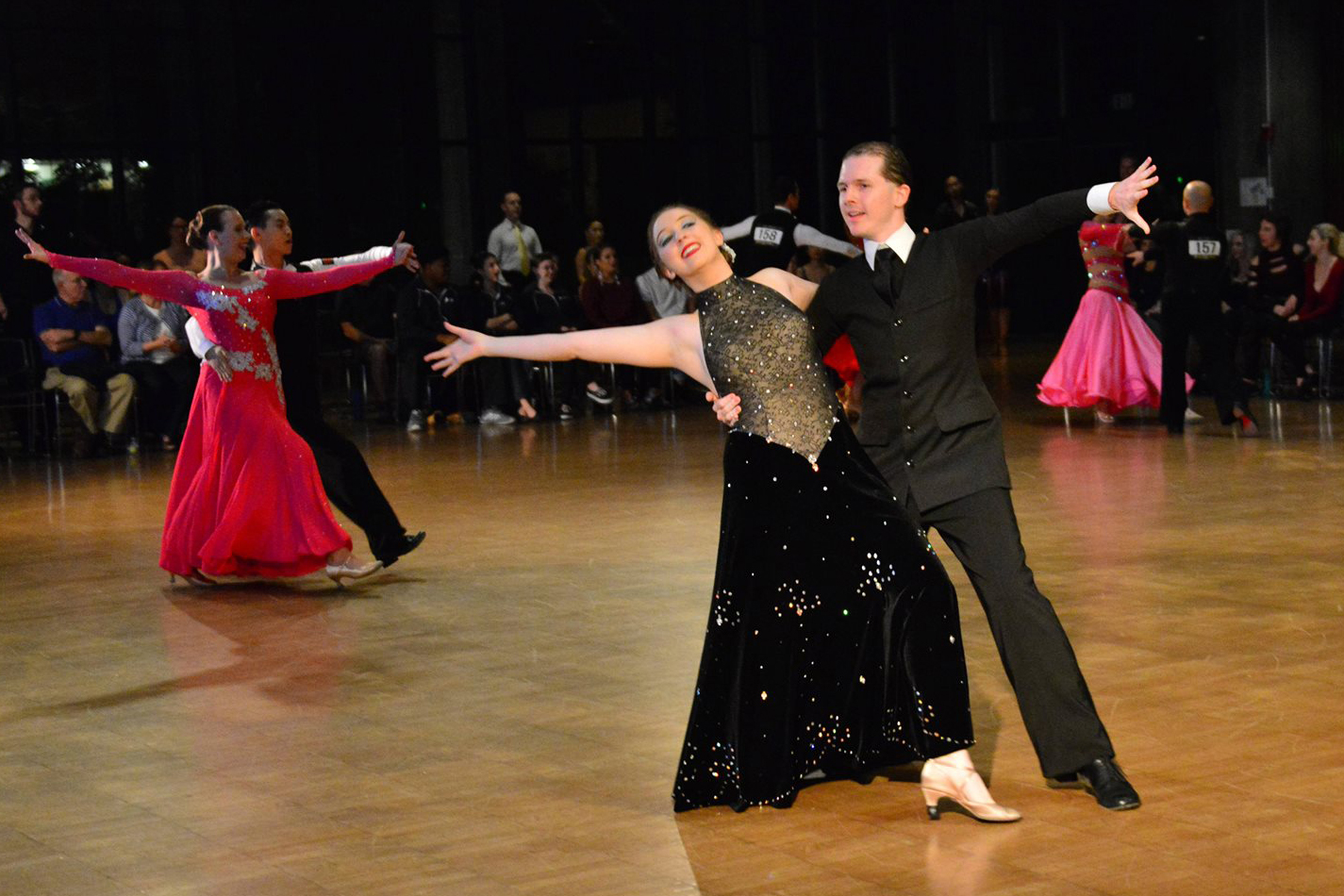“When we go to competitions, everybody dresses different ways. There’s this expectation that all the girls are going to be in dresses, and boys are going to be in suit jackets and/or, like, pants and other things (He gestures toward his torso, then his legs, as he names the items of clothing). This is a trend that we’re not happy about because people should be able to wear what they want when doing things, but ballroom is such a stereotyped endeavor that you tend to conform to these norms, and it is expected that you conform to particular gender norms. One of the gender norms that we have to go for is that the men all have their hair slicked back (He makes a hand motion above his head, miming slicking back his hair). There is, like, one hairstyle for men. If you have very nice hair that you already know how to style, like a part, and it’s a little bit high on top anyway, then you can leave it exactly how it is. Otherwise, you gel your hair directly backwards. I have seen some people recently try to do a part, but I’m not wild about that. It should be as directly back as you go, and this is stuff that I got from the University of Minnesota ballroom dance team as well. Everybody’s got the same hair. Some teams take this a step further, and all the men are wearing the exact same outfit. The BYU team, the Bringham team, all of their leads look exactly the same. They are cookie cutter copies of each other. They are all wearing the same black tie, black best, white shirt, black pants, black shoes, same haircut, same everything. They’re very uniform, and it’s terrifying because when they dance the same, it looks very scary. While the boys are expected to be cookie-cutter versions of themselves, the girls, from my perspective, are expected to wear different things to be flashy and show off. The standard is for the boys to look as boring as possible and the girls to look as exciting as possible: a dress that flows (he stretched out the work, gets louder, and starts making big gestures with his hands), and does a thing (he flutters his hand, mimicking the way skirts twirl when dancers turn), that is colored. It’s nice when boys’ outfits can match their ladies’ dresses, but it is usually done by maybe a matching a shirt. It’s becoming more common these days, often by matching a tie or sometimes socks, but never the pants. Never does the whole outfit really compliment her. It goes with the idea in the ballroom world that it’s more about showing off your partner as a lead than about doing the things yourself. That isn’t always true when you become a professional dancer, but mostly it’s about ‘Look at my partner! Isn’t she great? Isn’t she sexy?’”
Background Information and Context:
The traditional dress and gender roles that the informant shares here are based on his attendance at collegiate dancesport competitions as well as some observations of professional dancesport, which collegiate dancesport mimics in many ways. What he described is how almost all members of the SC Ballroom and Latin Dance Team dress at competitions. The informant has been a competitive ballroom dancer in the collegiate circuit for about six years and has taken on a sort of mentor role on the SC Ballroom and Latin Dance Team, frequently giving new members advice on what judges expect of them at competitions. He began talking about the gendered differences in dancesport apparel when prompted to talk about competition costumes, which look unlike what most people would see in regular fashion.
Collector’s Notes:
Gender norms exist in every culture and aspect of society, but the strange world of dancesport (competitive ballroom dancing) often seems backwards, and not just because the dances in which we compete are very old. Even though it is appropriate for women to wear pants in everyday settings in America, even in more formal situations like business meetings or award shows, the sight of a woman in pants on a competitive dancefloor would be strange, even unwanted. The gendered nature of dancesport seems to be ingrained in the concept of a male lead and a female follow, mirroring (somewhat declining) societal expectations of male authority and female subservience. I found it interesting that this inequality is approached a slightly different way by informant, who seems to regret the absence of clothing choices for males and the nature of attention-grabbing turns and tricks, which mostly place the female at the center of attention. Still, the nature of this attention is questionable, as one could argue that it is not beneficial that the roles require the “sexy” partner to be shown off by her male partner.

